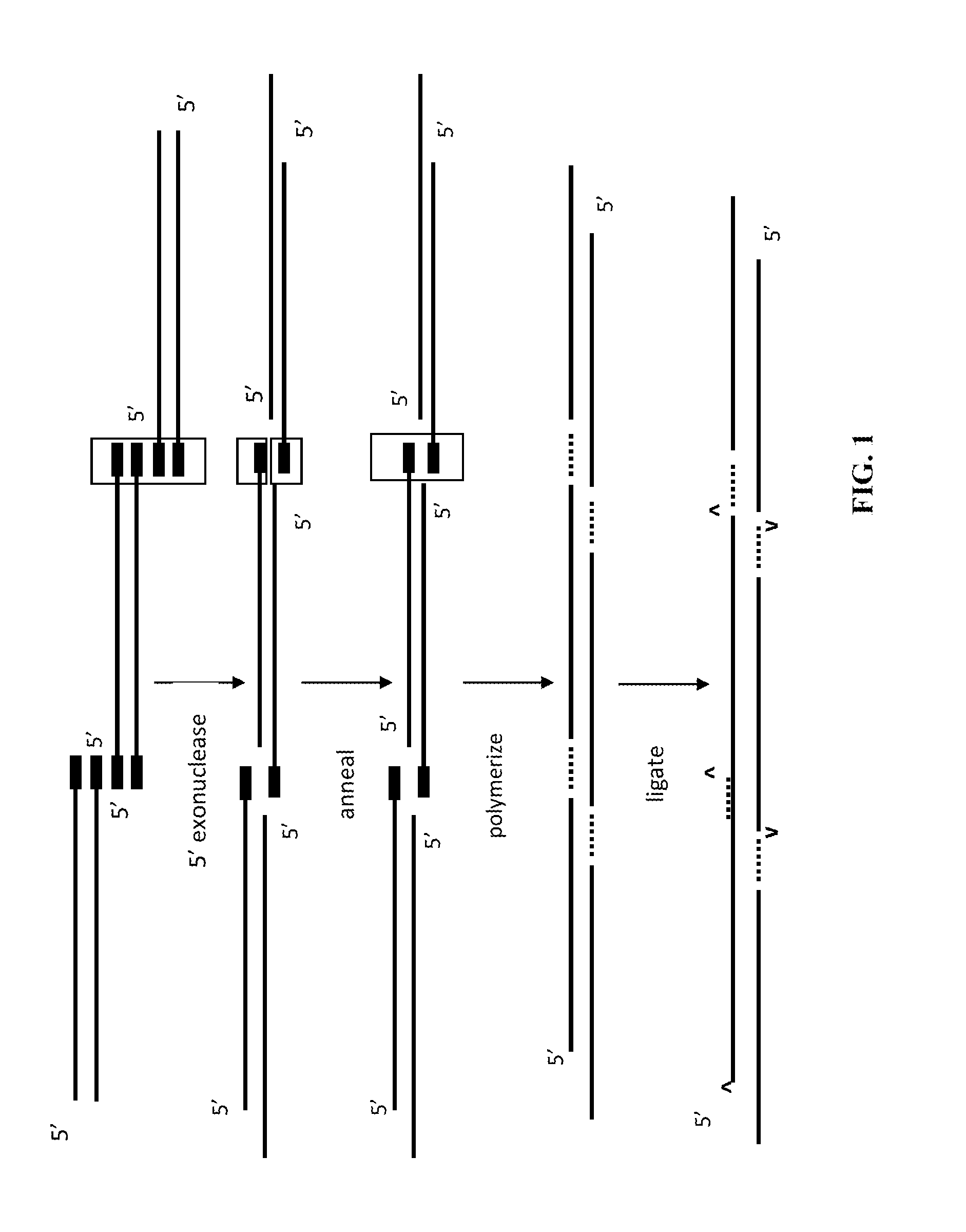In vitro recombination method
a recombination method and double stranded technology, applied in the field of in vitro recombination methods, can solve the problems of insufficient understanding of the mechanism involved, difficult to pinpoint the proteins involved in the homologous recombination process, and inability to know whether host proteins are also importan
- Summary
- Abstract
- Description
- Claims
- Application Information
AI Technical Summary
Problems solved by technology
Method used
Image
Examples
example i
[0075]Four DNA molecules, having lengths of 2.2 kb, 1.5 kb, 1.55 kb and 1.2 kb, were incubated according to a method of the invention, under the conditions noted in FIGS. 5 and 6. The reaction mixes were subjected to gel electrophoresis, along with molecular weight markers. When the samples were incubated for 45 minutes or 60 minutes, a major band of about 6.3 kb formed. This is the size expected for a joined product containing one copy of each of the DNAs.
example ii
[0076]4 enzymes (T7 5′-exonuclease, Taq polymerase, VENT polymerase, and Taq ligase) plus two or more overlapping DNA fragments which can form a circular DNA molecule when recombined, are recombined in a single reaction mixture such that the final product is a circular molecule containing the recombined fragments.
[0077]T7 5′-exonuclease is used to chew-back the 5′-ends of the duplex DNA fragments, thus exposing the overlapping regions. This enzyme has no activity on 3′-ends. It acts at free ends and at nicks in the DNA. Once the overlaps are exposed, they can anneal to form joints that can be repaired because the 3′-ends of the annealed regions can be extended by the Taq polymerase, which prior to the exposure and annealing of the overlaps was inactive in the reaction mixture. The purpose of the VENT polymerase, which is in very low amount, is to remove any single 3′ nucleotide additions that are produced by the Taq polymerase on the DNA fragments ends prior to the action of the T7 ...
PUM
 Login to View More
Login to View More Abstract
Description
Claims
Application Information
 Login to View More
Login to View More - R&D
- Intellectual Property
- Life Sciences
- Materials
- Tech Scout
- Unparalleled Data Quality
- Higher Quality Content
- 60% Fewer Hallucinations
Browse by: Latest US Patents, China's latest patents, Technical Efficacy Thesaurus, Application Domain, Technology Topic, Popular Technical Reports.
© 2025 PatSnap. All rights reserved.Legal|Privacy policy|Modern Slavery Act Transparency Statement|Sitemap|About US| Contact US: help@patsnap.com



